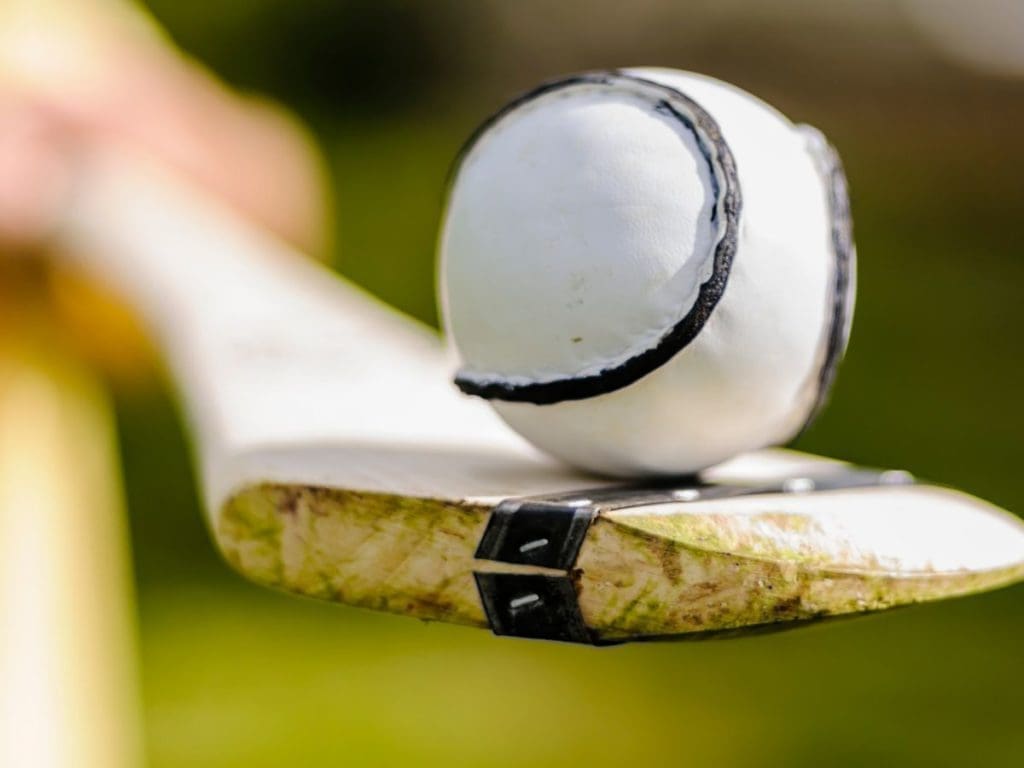In December, 2013, I spent a week driving around Ireland, visiting various cities and landmarks. My first stop was in Dublin, to pick up the rental car. I noticed a massive stadium across the street from the rental service. My first thought was this must be where they play all the big football games, not realizing that Ireland had its own amazing sport that myself and probably most Americans have never heard of.
The stadium is called Croke Park. The game: Hurling.
Hurling: A Brief History
Few sports played on Earth can boast beginnings as early as baseball, but hurling isn’t far off. Rules were made official in 1885 by the Gaelic Athletic Association, and published in local newspapers throughout the country. It is believed that hurling arrived in Ireland well before Christianity, as mention was made of the game in original fifth-century Brehon Law.

At first sight, it looks like a cross between lacrosse, baseball, American football and soccer. Perhaps even a bit of hockey. A hurling team is made up of fifteen players, all armed with a hurley, a piece of wood shaped like an axe. Like many other sports, the goal is to rack up more points than the opponent, and in hurling, this is done by scoring goals (into the net) and driving balls through the crossbars (above the net, between the bars). A goal is worth three points, and a ball that passes between the crossbars is worth one point. It’s worth noting that a hurling ball, or sliotar, is just a bit smaller than a baseball and made of both cork and leather.
Hurling: Non-Stop Action
Imagine baseball players, each with a bat, moving the ball down the field any way they can, and driving the ball into the net or over the crossbar. For two 35 minute periods, the action almost never stops. The crowd has no reason to stop cheering, part of what makes these matches so exciting is the constant engagement and drama. At any given point, a ball can be driven nearly the entire length of the 150-yard pitch.
Like in soccer, only certain types of tackles are legal, and there are strict rules on which type of tackle is allowed. This is important because the players wear nothing for protection besides a helmet with a few metal bars to protect the face. The interaction between players sometimes seems quite precise, and sometimes seems desperate and haphazard. Either way, the precision and skill required to field a small ball travelling at close to 90 miles per hour does not go without notice.
The intensity on a hurling pitch is evident by crowd reaction. Over 80,000 spectators crammed Croke Park on September 27th to see the replay (first game ended in a draw) of the championship match between Tipperary and Kilkenny. No sport has spectators more intensely engaged in every single action. They become a living, breathing extension of the on-field drama, each movement accentuated by a collective gasp or cheer. It is a sight to see, and a sound to hear.
Hurling Broadcasters
Something should also be said about the voices of this sport. The on-air broadcasters are incredibly adept and knowledgeable. It’s perhaps some of the best play-by-play I’ve heard in any sport.
I have to admit, I’m writing from a place of complete ignorance. I also have to admit, that after watching my first two hurling matches last night, I can say that this is a game I will keep an eye on until my bitter end. For anyone interested in high-energy, high-skilled competition, a good hurling match has no equal. It’s not even worth comparing to playoff hockey, or American Football. There is simply nothing to compare to the level of intensity found in these championship hurling matches, as you’ll see if you enjoy the video below.
Baseball is, and will always be the sport nearest to my heart, but I can honestly say that after last night, hurling will forever be on my radar.
Ireland’s Gaelic Athletic Association is responsible for the putting together the annual All-Ireland Senior Hurling Championship, the annual run of games between 14 of the top inter-county teams in Ireland. Consider the below video your first taste of hurling. It most likely won’t be your last.



